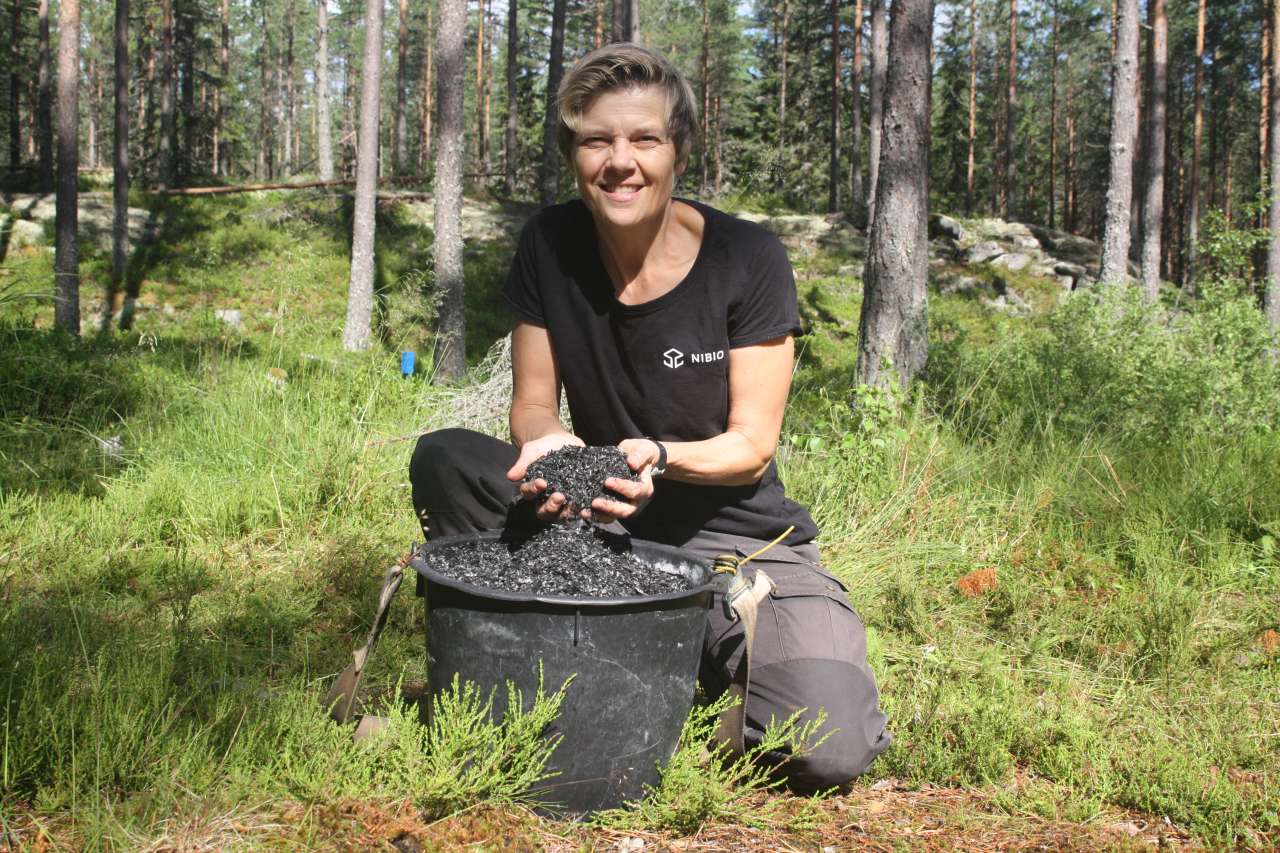Biochar for carbon capture in forests

Photo: Kjersti Holt Hanssen
A new research project will examine the effects of applying biochar to forests. The new method could result in increased tree growth and carbon capture in Norwegian forests.
Biochar is produced by pyrolysis — combustion at high temperatures without an oxygen supply. Different types of biomass, such as wood chips or straw, are combusted, resulting in a product similar to barbecue charcoal. Biochar is resistant to decomposition. It can be used for soil amendment and to improve carbon capture in soils, but also as a fertilizer, especially if it is enriched with nitrogen.
While Norwegian agricultural land make up approximately 1.1 million hectares, or around 3% of the land area, the forests in Norway cover over 12 million hectares, or 37% of the country's land area. Forests also play a very important role in Norway's greenhouse gas accounting, and this is where biochar comes in.
Different methods for long-term carbon capture and storage in soil and forest, also known as Bio-CCS (Carbon Capture and Storage), are essential in our fight to stabilize, or ideally reduce, CO2 emissions. To achieve the target in the Paris Agreement of limiting the global warming to max 1.5–2°C within the next 80 years, it is essential to utilize trees' photosynthesis and the tremendous capacity of forest soil to capture and store CO2.
Studies have shown that biochar can increase growth in agricultural crops by 10 - 25%. In pot experiments with tree seedlings, the average growth increase was over 40%. During the four-year FORBIOCHAR research project, the effect of standard forestry fertilizer will be compared with that of biochar, and biochar enriched with fertilizer.
"In theory, the nitrogen-enriched biochar could have a triple effect, with increased growth, increased carbon storage and less runoff," explains NIBIO researcher Kjersti Holt Hanssen.
Contacts

Contacts

